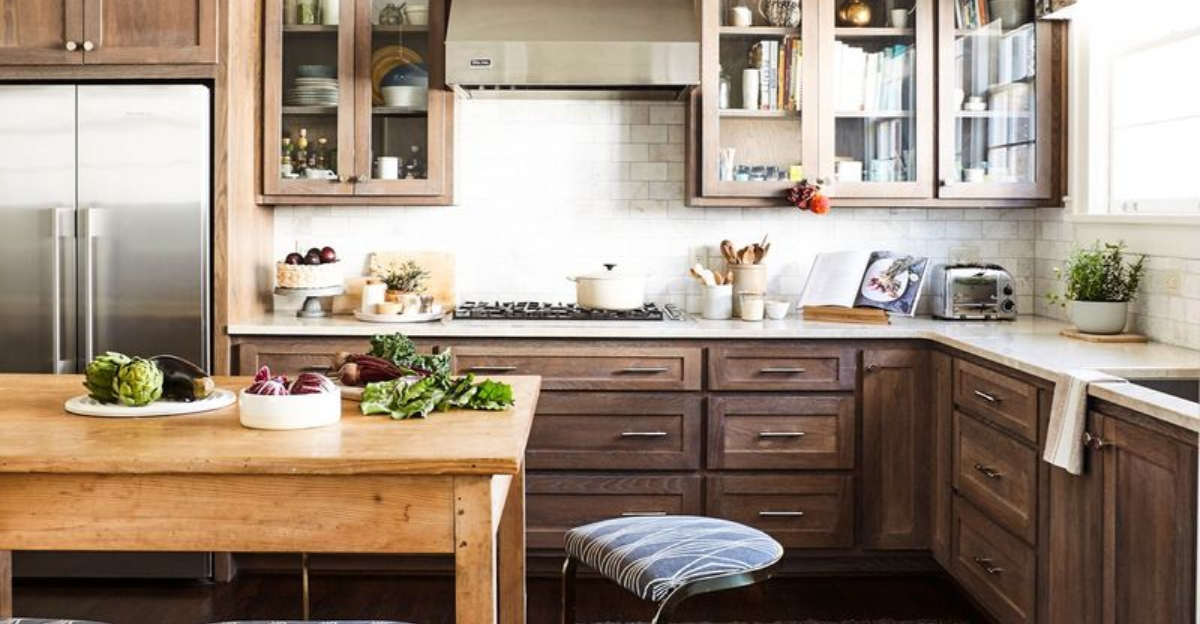Ever dreamed of a kitchen that feels like a cozy cabin retreat, even in the heart of the city? Rustic kitchens blend timeless charm with practical functionality, creating spaces that welcome both family gatherings and solo cooking adventures.
While some rustic elements have stood the test of time, others are fading into design history – let’s explore which rustic touches deserve a permanent spot in your kitchen and which ones we’re happily leaving behind.
1. Exposed Wooden Beams
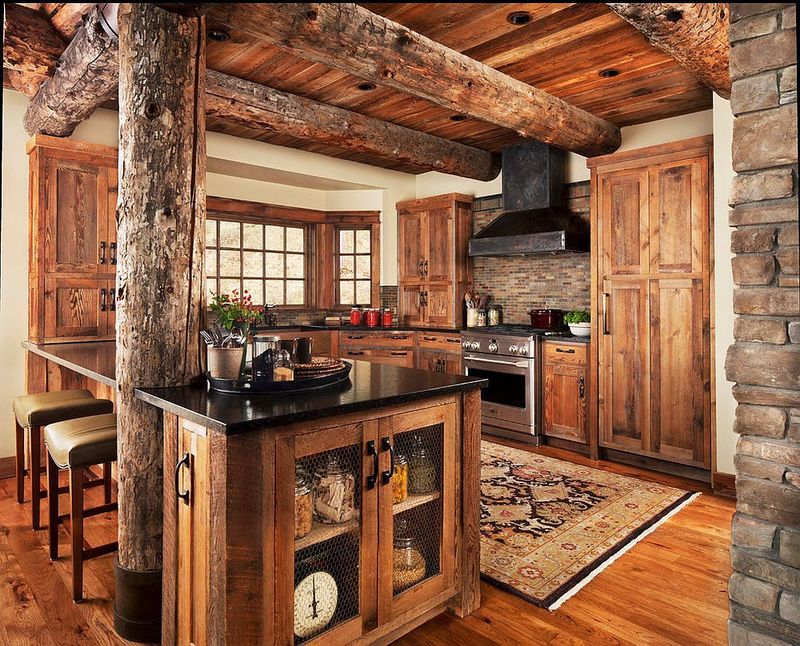
Nothing whispers ‘rustic charm’ quite like overhead wooden beams stretching across your kitchen ceiling. These architectural features instantly add character, warmth, and a touch of countryside appeal.
Whether you preserve original beams or install reclaimed timber, they create visual interest and a framework that grounds the space. The natural wood tones bring an organic element that contrasts beautifully with modern appliances.
2. Farmhouse Sink

Imagine washing garden vegetables in a deep, spacious basin that’s as beautiful as it is functional. Farmhouse sinks (also called apron-front sinks) have transcended their utilitarian origins to become kitchen showpieces.
With their distinctive protruding front panels and generous depth, these sinks accommodate everything from bulky pots to delicate glassware. Available in fireclay, porcelain, copper, or stone, they anchor the kitchen with authentic rustic presence.
3. Open Shelving
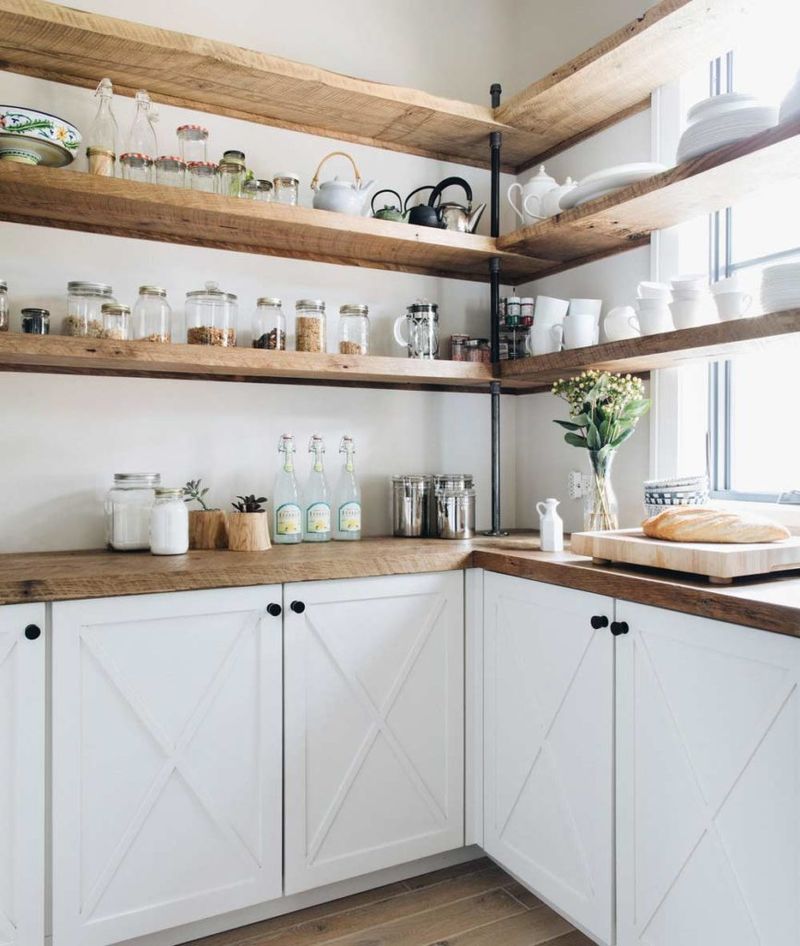
Who says storage can’t be a design feature? Open shelving transforms everyday items into curated displays while keeping everything within arm’s reach.
Crafted from reclaimed wood or rough-hewn timber, these floating platforms showcase heirloom dishes, mason jars filled with pantry staples, or collected pottery. The beauty lies in the imperfections – knots, grain patterns, and natural edges add authentic rustic character that mass-produced cabinetry simply can’t match.
4. Stone Accent Wall
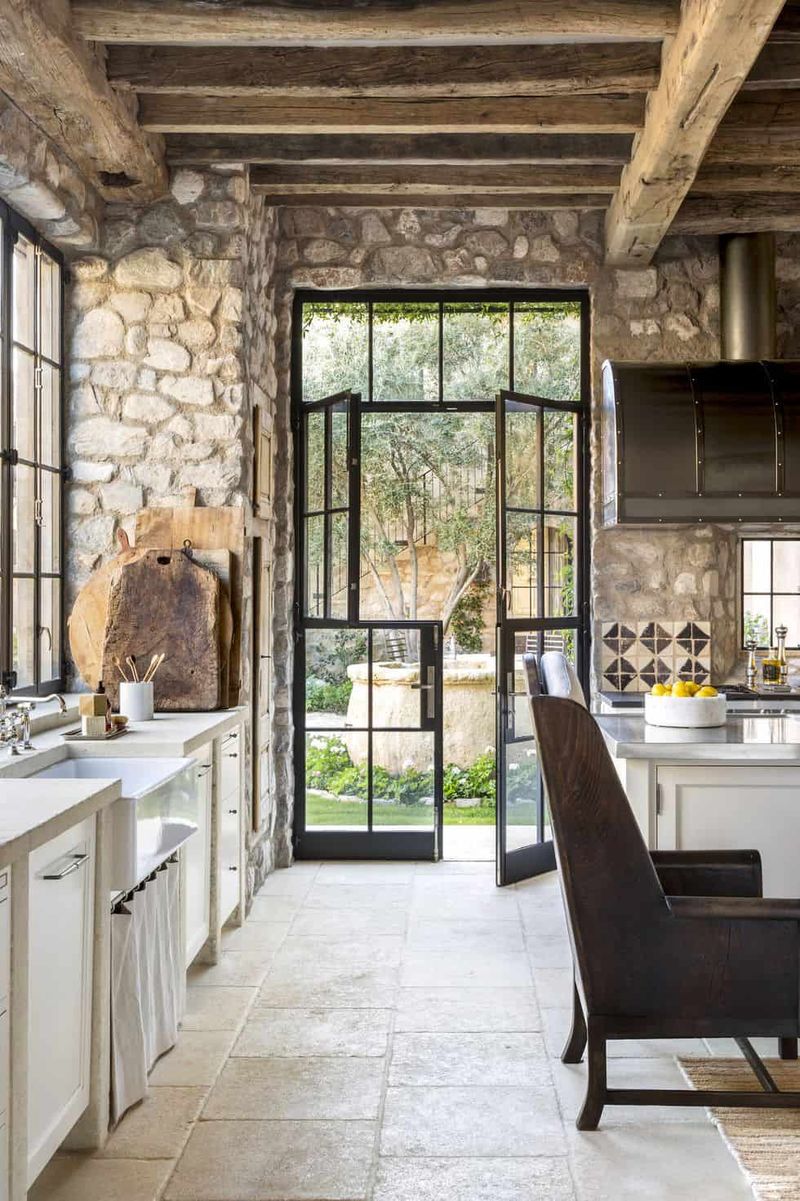
Bringing the outdoors inside creates instant rustic magic! A stone accent wall or backsplash introduces rugged texture that stands in beautiful contrast to smoother kitchen elements.
From river rock to stacked fieldstone or even brick, these natural materials add dimensional interest and earthy tones. The varied surfaces catch light differently throughout the day, creating subtle mood shifts. Plus, stone’s durability means this investment will look just as good decades from now.
5. Butcher Block Countertops

Run your hands across a butcher block countertop and you’ll understand its enduring appeal. Unlike cold stone or sterile synthetic surfaces, wood counters feel alive and warm to the touch.
These working surfaces develop character over time, telling the story of family meals prepared and memories made. While they require occasional maintenance with food-safe oils, the rich patina that develops becomes uniquely yours. The natural variations in wood grain create visual interest without overwhelming the space.
6. Vintage-Inspired Appliances
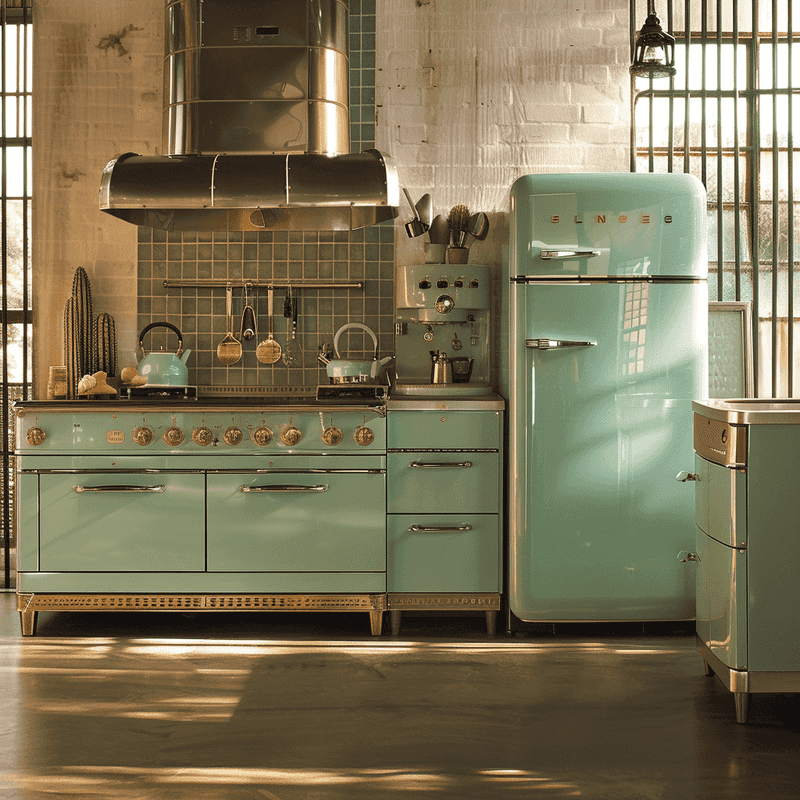
Remember when appliances were built to last and designed with character? Today’s vintage-inspired models combine old-school aesthetics with modern technology – the perfect rustic kitchen compromise!
From retro refrigerators in candy colors to statement ranges with brass accents, these pieces become functional art. The rounded edges and analog dials offer a welcome break from minimalist designs. Many brands now offer energy-efficient options that won’t break your utility budget while still delivering nostalgic charm.
7. Wrought Iron Accents
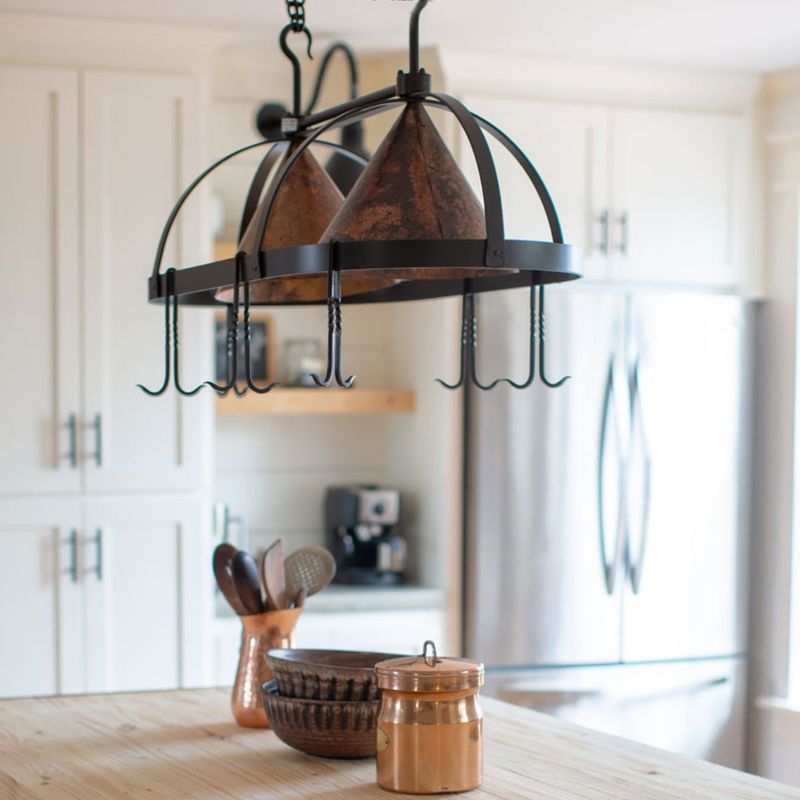
Forged by fire and hammered by hand, wrought iron elements bring authentic craftsmanship to rustic kitchens. These dark, substantial pieces ground lighter elements and add architectural interest.
Consider pot racks suspended from ceiling beams, displaying copper cookware like functional art. Cabinet hardware, light fixtures, and shelf brackets in this material introduce consistent visual rhythm. The slight imperfections and hand-worked details in true wrought iron speak to a time when items were built with generational longevity in mind.
8. Mixed Wood Tones
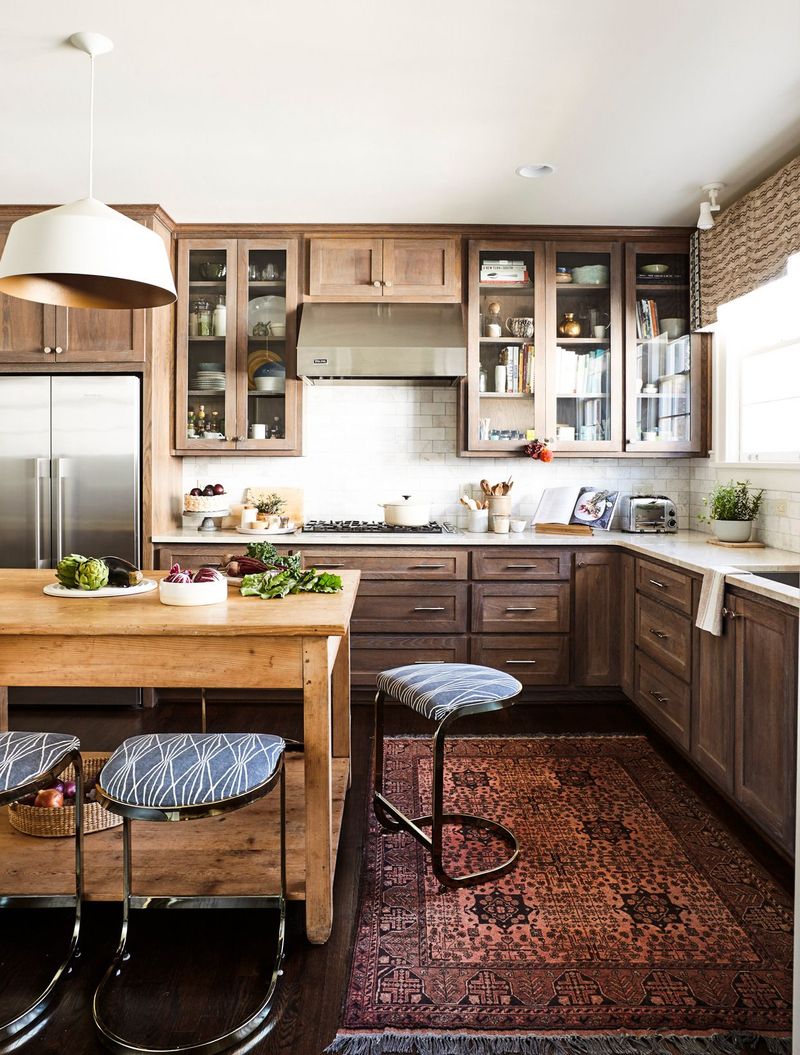
Forget matching sets – today’s timeless rustic kitchens celebrate wood in all its varied glory! Mixing light pine with rich walnut or weathered oak creates depth and visual interest that single-tone kitchens lack.
Think of it as creating a forest ecosystem in your home – different species coexisting harmoniously. The key is balancing warm and cool undertones while maintaining some connecting elements. This approach feels collected over time rather than purchased all at once, capturing authentic rustic spirit.
9. Handmade Ceramic Tiles

Mass-produced perfection has no place in truly rustic spaces. Handcrafted ceramic tiles bring subtle variations in color, texture, and dimension that machine-made versions simply cannot replicate.
From backsplashes to flooring, these artisanal elements add soul to functional surfaces. The slight irregularities catch light differently throughout the day, creating ever-changing visual interest. Many artisans create tiles using traditional methods passed down through generations, connecting your kitchen to centuries-old craft traditions.
10. Live-Edge Wood Details
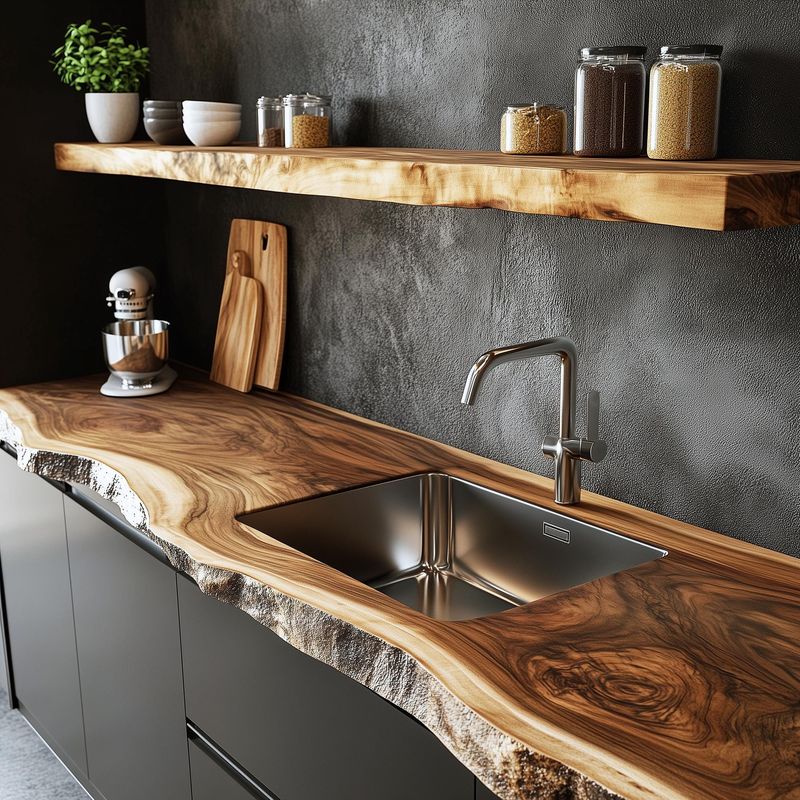
Mother Nature’s perfect imperfections shine through in live-edge wood elements. These pieces preserve the natural contours of the tree, celebrating organic shapes instead of perfectly straight lines.
From floating shelves to statement island countertops, these distinctive wood pieces become instant conversation starters. The raw, untamed edges remind us of our connection to the natural world. Each knot, grain pattern, and edge undulation tells the unique story of the tree’s growth.
11. Barn Doors (Going Away)
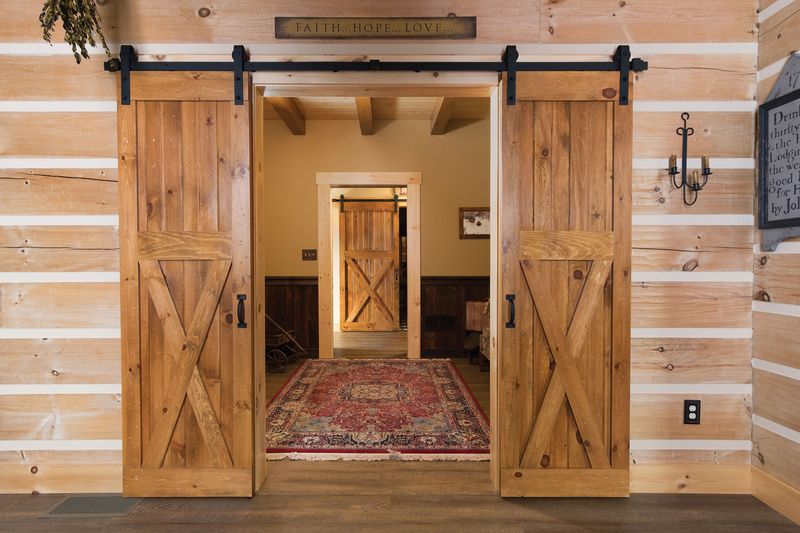
Once the darling of rustic design magazines, sliding barn doors are rolling into the sunset. While they initially offered space-saving solutions with agricultural charm, they’ve become victims of their own popularity.
The reality? These doors offer minimal privacy, can be noisy to operate, and often collect dust in their tracks. As open floor plans evolve toward defined spaces, traditional hinged doors are making a comeback. If you still love the look, consider repurposing authentic barn wood into furniture instead.
12. Mason Jar Everything (Going Away)
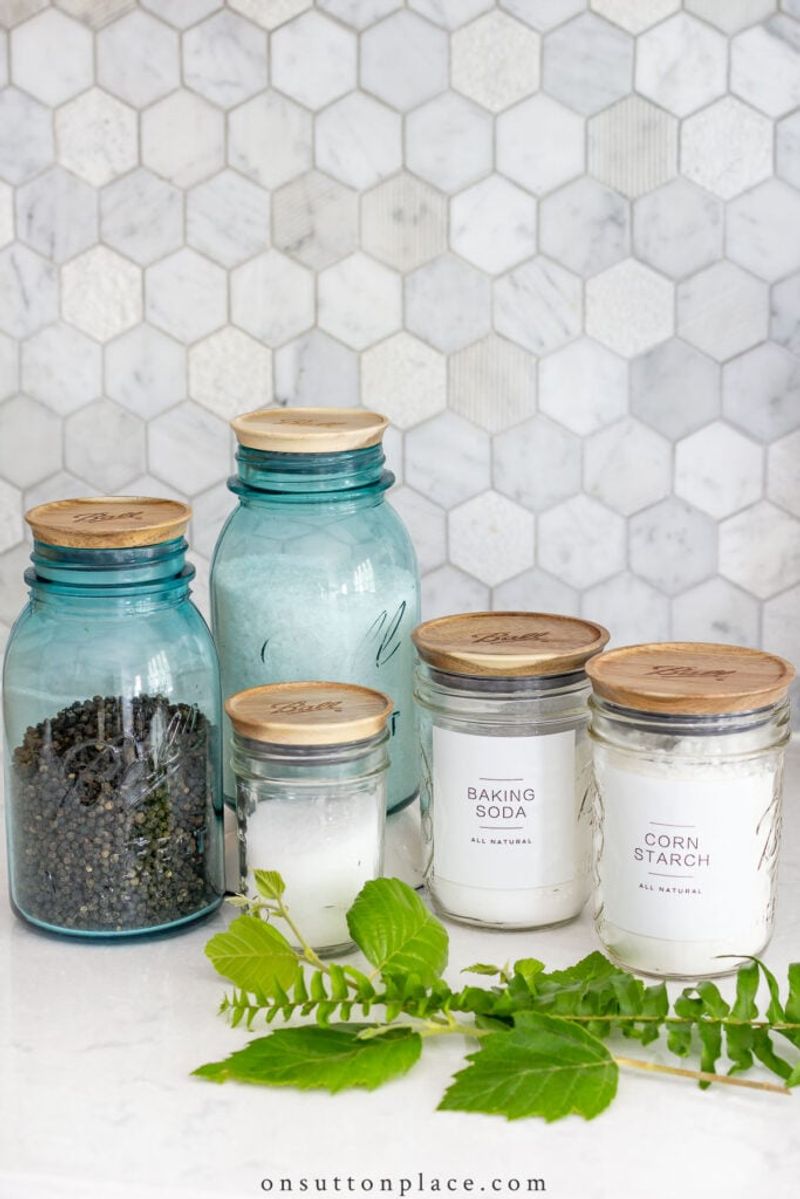
From lighting fixtures to soap dispensers, these humble canning vessels once dominated rustic kitchens. The mason jar craze reached peak saturation around 2015, when you couldn’t scroll Pinterest without seeing yet another DIY project involving these glass containers.
While they make practical pantry storage, their overuse as decorative elements now reads as dated and unoriginal. Today’s rustic kitchens are embracing more sophisticated glass and ceramic vessels with authentic heritage, reserving mason jars for their intended purpose – preserving summer’s bounty.
13. Distressed Everything (Going Away)
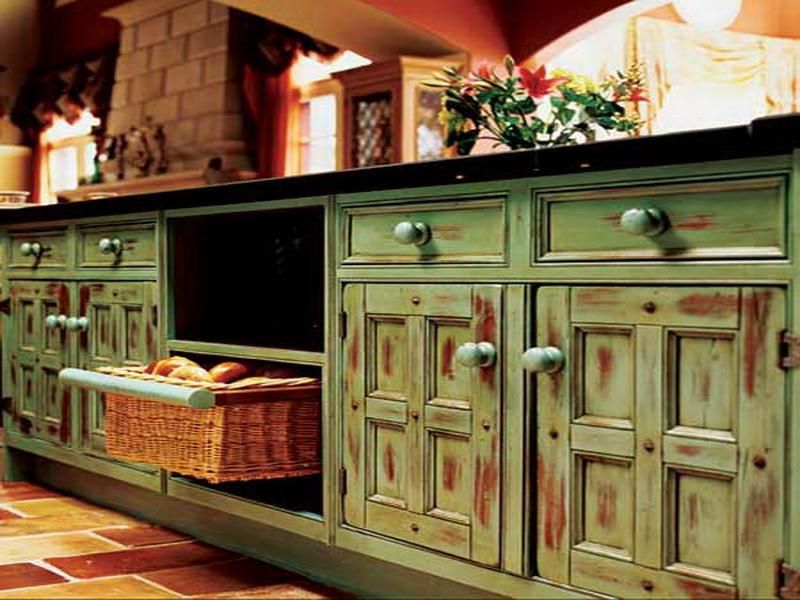
Remember when every rustic kitchen surface needed to look like it had weathered a century of hard use – even when installed last Tuesday? The artificially distressed finish trend has finally worn itself out.
Authentic patina develops naturally over time through genuine use and care. Today’s approach favors quality materials allowed to age gracefully rather than faux-aged finishes that often look contrived. If you crave character, incorporate truly reclaimed elements with honest wear rather than manufactured distressing.
14. Rooster Motifs (Going Away)

At some point, rustic kitchens and rooster decorations became inexplicably linked. From cookie jars to wall clocks, these barnyard birds roosted on every available surface throughout the early 2000s.
There’s nothing inherently wrong with appreciating poultry, but the ubiquitous rooster theme has become visual shorthand for dated country kitchens. Today’s rustic spaces favor more subtle nods to rural life – perhaps botanical prints of kitchen herbs or locally-made pottery – rather than literal farmyard inhabitants.
15. Word Art Signs (Going Away)
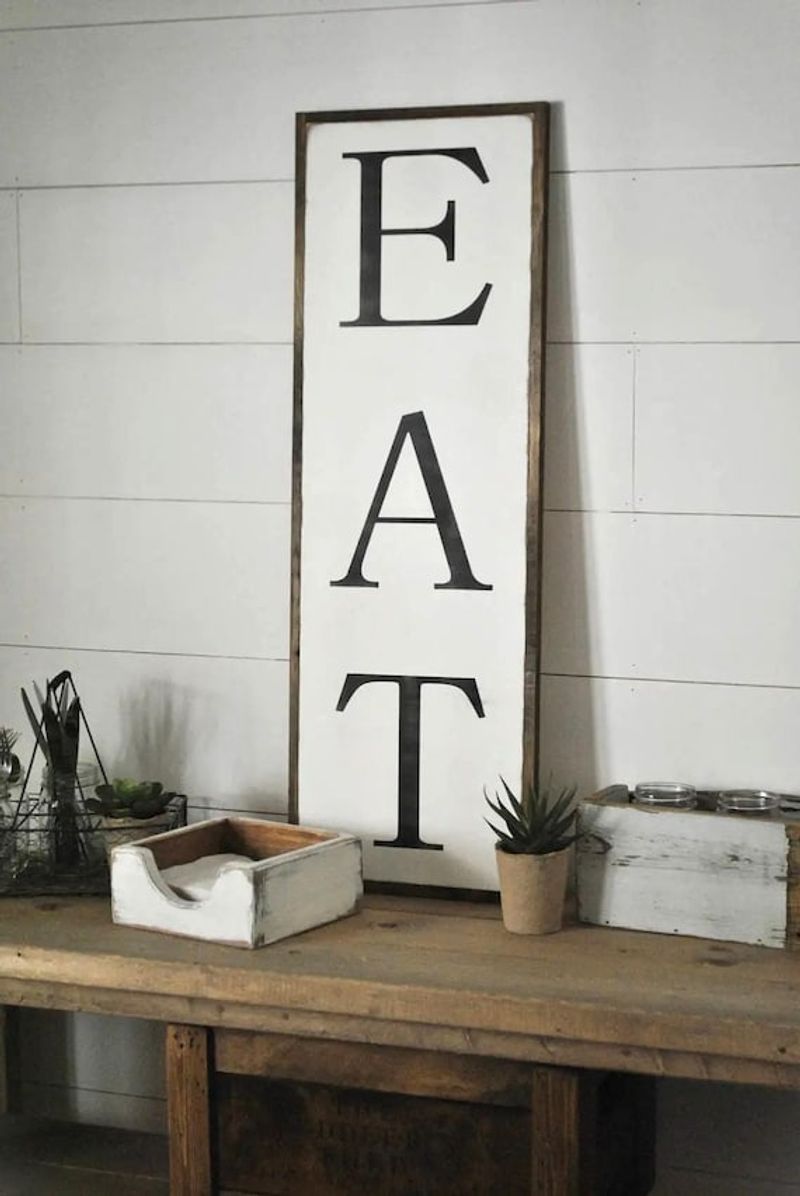
Does your kitchen really need to announce it’s a kitchen? The trend of decorative signs spelling out ‘EAT,’ ‘KITCHEN,’ or ‘FARMHOUSE’ in distressed typography has finally reached its expiration date.
These literal labels state the obvious while adding visual clutter. Today’s rustic kitchens let materials and architecture speak for themselves without explanatory signage. If wall decor is desired, vintage cooking implements, botanical prints, or local landscape photography offer more sophisticated rustic character.

